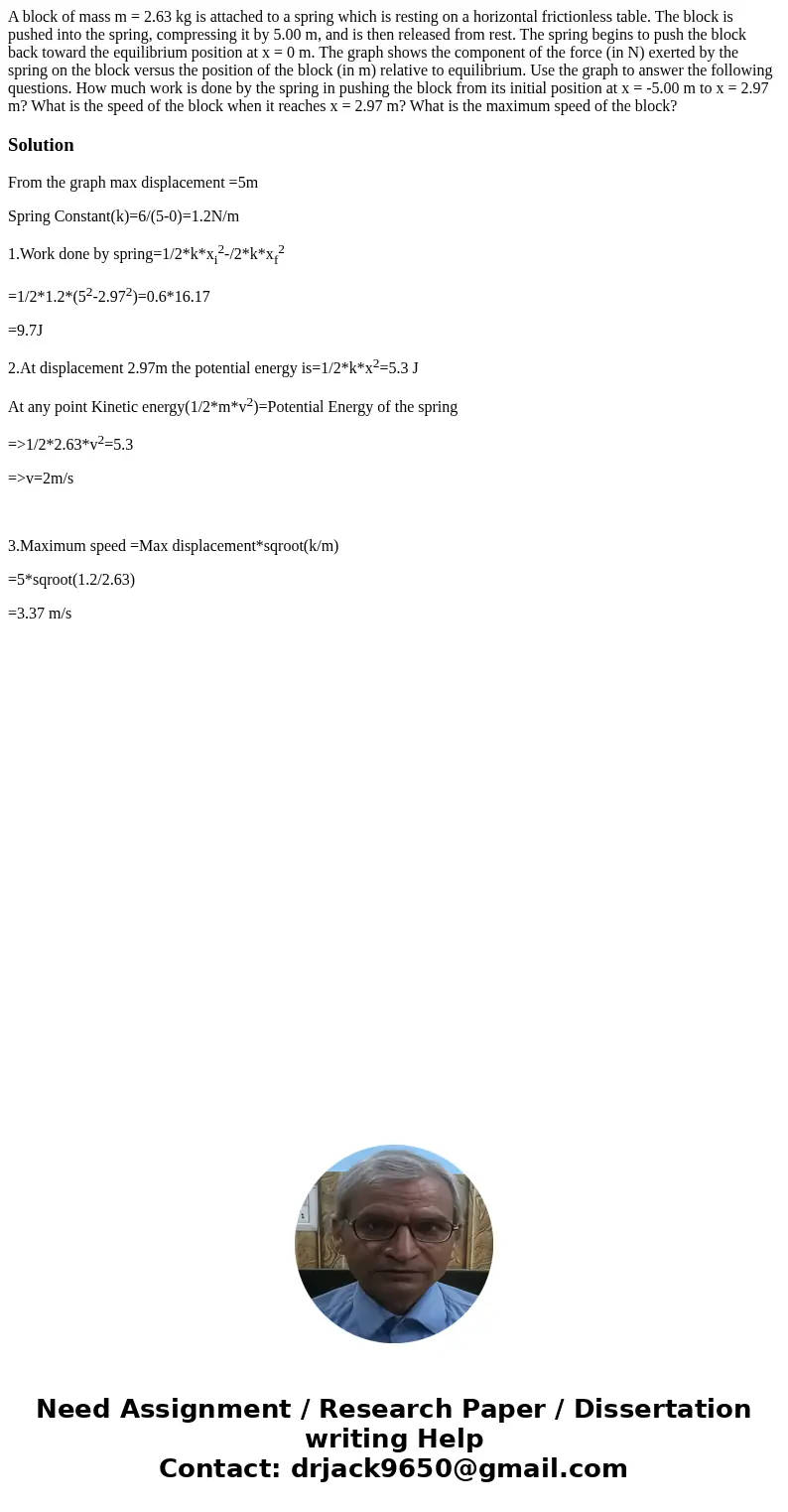A block of mass m 263 kg is attached to a spring which is r
A block of mass m = 2.63 kg is attached to a spring which is resting on a horizontal frictionless table. The block is pushed into the spring, compressing it by 5.00 m, and is then released from rest. The spring begins to push the block back toward the equilibrium position at x = 0 m. The graph shows the component of the force (in N) exerted by the spring on the block versus the position of the block (in m) relative to equilibrium. Use the graph to answer the following questions. How much work is done by the spring in pushing the block from its initial position at x = -5.00 m to x = 2.97 m? What is the speed of the block when it reaches x = 2.97 m? What is the maximum speed of the block?
Solution
From the graph max displacement =5m
Spring Constant(k)=6/(5-0)=1.2N/m
1.Work done by spring=1/2*k*xi2-/2*k*xf2
=1/2*1.2*(52-2.972)=0.6*16.17
=9.7J
2.At displacement 2.97m the potential energy is=1/2*k*x2=5.3 J
At any point Kinetic energy(1/2*m*v2)=Potential Energy of the spring
=>1/2*2.63*v2=5.3
=>v=2m/s
3.Maximum speed =Max displacement*sqroot(k/m)
=5*sqroot(1.2/2.63)
=3.37 m/s

 Homework Sourse
Homework Sourse